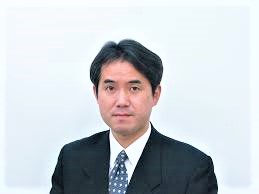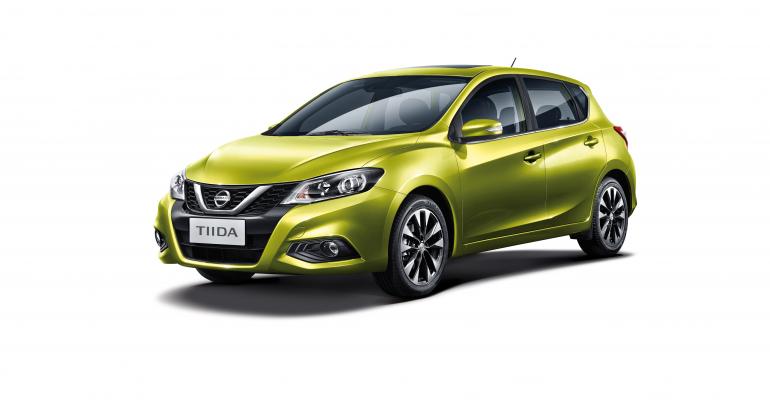YOKOHAMA, Japan – Thirty years ago this June, Japan Automatic Transmission, a joint venture between Ford, Mazda and Nissan, changed its name to JATCO.
Today, JATCO, now a Nissan subsidiary, is the world’s leading supplier of continuously variable transmissions (CVT), claiming an estimated 35% share of the global market in 2018. And it is profitable, having registered a nearly 10% operating margin in fiscal 2017.
Teruaki Nakatsuka, JATCO’s president and CEO (below, left), is bullish about the supplier’s future. In an interview with Wards, Nakatsuka, soon to begin his sixth year on the job, says JATCO expects to continue to grow its business although he declines to set any targets.
Nakatsuka does say JATCO will open a CVT plant in eastern China toward the end of this year. The plant, located in Suzhou, will have capacity to produce nearly 500,000 units of CVT8 transmissions for midsize and fullsize cars, raising JATCO’s capacity in the Chinese market to 1.6 million.
Shortfalls, for now, are being met by imports from three JATCO plants in Japan and one in Thailand. Nissan alone produced 1,558,015 vehicles in China last year, including models ranging from the Qashqai and X-Trail CUVs to the Tiida and Sylphy sedans.
JATCO currently manufactures CVTs at seven plants in China, Japan, Thailand and Mexico with combined capacity of 4.5 million.
Including JATCO’s lineup of “step” automatic transmissions (ranging from 4-speed to 7-speed), the supplier has the capacity to produce to 5.7 million transmissions annually.
Nakatsuka says JATCO has no plans to produce CVTs in Europe. “From a cost standpoint and judging from our business outlook in the market, it doesn’t make sense,” he says, noting European drivers still prefer the feel of a manual transmission over a CVT.
In North America, he believes JATCO’s operation in Aguascalientes, Mexico, which has the capacity to produce 1.7 million CVTs annually, is enough to meet the needs of its customers in the region – namely, Nissan.
JATCO Mexico ships CVTs from its two large plants to the U.S. and Europe in addition to supplying Nissan in Mexico. In Europe, it supplies select Nissan and Renault models.
On the Mexico trade front, Nakatsuka sees no major impact from the U.S.-Mexico-Canada Agreement, which is intended to replace NAFTA if and when ratified by Congress.
“We had already localized components and materials to appropriate levels,” he says.
Meanwhile, JATCO is moving into the electrified-vehicle segment by way of several new e-axle technologies.
At the Shanghai auto show in April, JATCO exhibited two types of e-axles for future electrified vehicles (EVs), a coaxial type and a 3-axis type. And in the 48V mild-hybrid segment, the supplier plans to introduce a system for a still-to-be-named OEM in 2021.
Displayed at the 2018 Beijing auto show, JATCO’s concept incorporates the same “one-motor/two-clutch” device developed for its CVT8 Hybrid transmission which Nissan adopted several years ago for full-hybrid versions of the Pathfinder, X-Trail and Infiniti QX60 SUVs. The Pathfinder and QX60 hybrids are no longer in production.
Nakatsuka reports JATCO is targeting the Chinese and European markets with the technology, although he expects China to adopt it first.
“It is a good ‘bridge’ solution before the industry moves into full battery electrification and, in JATCO’s case, evolves from our CVT.”
Key system components include a 48V battery, DC-DC converter, inverter, motor-generator and integrated starter-generator.
JATCO estimates the system reduces carbon-dioxide emissions 14% compared to a vehicle fitted with a standard CVT and start-stop system. The supplier estimates the system will be able to meet post-2020 CO2 emissions requirements at the “most reasonable” cost in major markets including the U.S., European Union and China.
 “The pace of full electrification will be determined by customers who are willing to buy EVs from a cost, durability and range standpoint, not by OEMs and governments,” Nakatsuka says. “The pace will accelerate, no doubt. But the market won’t grow so easily.”
“The pace of full electrification will be determined by customers who are willing to buy EVs from a cost, durability and range standpoint, not by OEMs and governments,” Nakatsuka says. “The pace will accelerate, no doubt. But the market won’t grow so easily.”
He estimates EV sales will grow to 15%-20% of new-car demand in 2030.
And while bullish about the market for CVTs moving forward – he sees at least 20 more years before full electrification adversely impacts JATCO’s main business – Nakatsuka is realistic as well.
“The electrification trend will continue,” he reiterates, “while in the conventional transmission market some countries in Europe will prefer dual-clutch transmissions over CVTs. That said, China and the U.S. like the technology. So we don’t envision any clear winners.”





